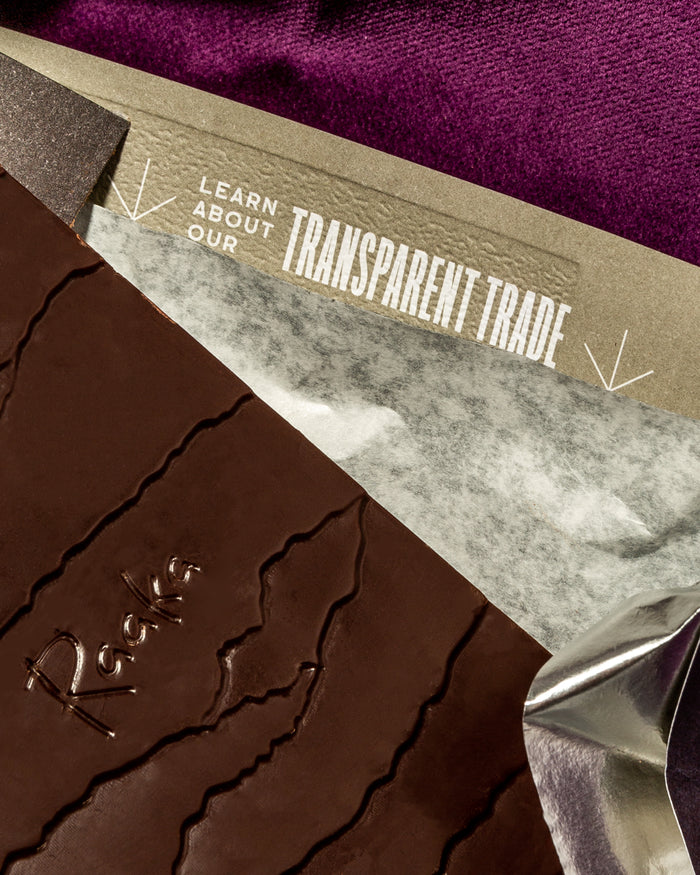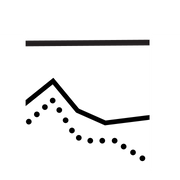
TRANSPARENT TRADE
Inside every Raaka bar we publish a report detailing our sourcing model. We call this model Transparent Trade.
Each report shows the details of how we purchase cacao, who we buy it from, what we paid for it, and how that compares to the commodity market and fair trade prices.
As makers our role is twofold: work with cooperatives and grower-centered organizations who focus on cacao quality and pay higher prices to farmers for that quality; and secondly, educate customers in a manner that is honest and forthright.
As eaters our role is to ask ourselves challenging questions about consumption and fairness. This is what Transparent Trade is all about.
WHAT IS TRANSPARENT TRADE?
We started Raaka because we knew there was a better way to make chocolate: from scratch. We use traceable, high quality, single origin, transparently sourced cacao to craft uncommonly delicious chocolate.
We believe the chocolate making process should value the community of growers, producers, and makers whose livelihoods depend on cacao. It takes an entire village of individuals, literally stretching across cultures and continents, to make every delicious bar. As chocolate makers, we are at the end of this supply chain closest to the customer. This allows us to tell some of the stories behind each bar we make.
Some of these stories are told through flavor: where the cacao came from, the conditions it was grown in, and how it was processed into chocolate are all expressed through taste. But some of these stories aren’t fully expressed through flavor: the stories of the growers, the workers, the exporters, and the makers. It’s up to us to make sure our customers have access to those stories, too. This is what Transparent Trade is all about.
This page breaks down our Transparent Trade model works and what the global chocolate supply chain looks like. The following pages offer a look into each of the producers we work with, some stories about our relationship with them, what we pay for their cacao, and what the supply chain from farmer to Raaka looks like.
Who do you buy from?
We purchase cacao from cooperatives, grower centric organizations, and sometimes single estate farms. We often refer to them as “producers” or “exporters”. These organizations purchase cacao from smallholder farmers, then ferment, dry, and sort the beans with a focus on quality and consistency, and finally market the finished beans to craft chocolate makers, connecting growers with quality buyers who would normally not be able to make those connections. The idea here is that we want to have the fewest nodes in our supply chain as possible and purchase from producers who are focused on building a stable market.
What does the farmer actually make?
This is the most important question, and likely the question you came here to answer. The farmer is paid a farmgate price by whoever they sell their cacao to, whether that be a cooperative or grower-centered organization like Kokoa Kamili. Like the Freight on Board price, the farmgate price will vary depending on the microeconomy at each origin (remember: apples, oranges, mangoes, bananas, etc). It can be tempting to take the farmgate price at face value, but often the price doesn’t tell the whole story.
All of the producers we purchase cacao from provide added services beyond simply acting as a buyer, processor, and exporter. Take Kokoa Kamili, who sells cacao seedlings at or below cost.
You’ll find farmgate prices in each partner’s profile. We've chosen to compare the farmgate prices of producers we work with to the most recent (2021) farmgate price paid to farmers in the Ivory Coast, the country that produces the majority of the world's cacao. This is not to discourage purchasing chocolate made from Ivorian cacao, but rather to contextualize the data. We encourage you to take the time to contextualize the farmgate price for each origin so that you can have a better understanding of the impact each producer has within their community.
Please explain what “Grower Centric Organization” is.
It’s a term we decided upon while discussing what to call our partners at Kokoa Kamili and Öko Caribe. Both purchase “wet” cacao (freshly harvested) from farmers, then ferment, dry, and export the finished cacao to craft chocolate makers. Their mission is to get more money into farmers hands by focusing on quality over quantity. Technically, Kokoa Kamili is a fermentary and an exporter, but this is an oversimplification of the work they do to improve the quality of life for Tanzanian farmers, respectively, so we settled on “grower centric/centered organization”. It’s a mouthful, but it’s more accurate. Read more about Kokoa Kamili here.
Why aren't you fair trade?
The simple answer to this question is that, with a few exceptions, the producers we purchase from have chosen not to become Fair Trade certified. We know this “simple” answer begs the question of “why not?” so we’ll explain further.
Certifications are a great way to simplify shopping. They provide a verified seal of approval that gains our trust because someone has already vetted something for us. There’s nothing inherently wrong with certifications; many of them open up new, more valuable markets, and we have some of them. But certifications often fail to realize the needs of micro-economies, especially when it comes to farmgate price.
As a chocolate maker, we strive to be a good partner to cacao producers we work with. This means understanding the individual needs of every community we work with. We find that the Fair Trade purchase price minimum is too low and doesn’t provide enough protection from market fluctuations. This is why we focus on price stability and transparency.
Can you explain the commodity market a little more?
Most cacao is produced in West Africa and sold at the commodities market. The export (FOB) price is set by the market and will swing dramatically depending on all sorts of variables that affect the supply and demand for cacao. Many of these variables are out of direct control by farmers, such as weather and political climate. Even worse, sometimes what results in a higher commodity price is actually quite detrimental to a producing region: if there’s a drought in West Africa that results in a significantly low harvest, the price will increase with a low supply and high demand, but those farmers in West Africa might not have enough cacao to really reap the benefits of that higher price because their yield might be too low. Only farmers whose crop is not affected by the drought will benefit.
This is why we focus on price stability: it allows our producer partners to rely on us as a reliable buyer year after year, improving their quality of life.







